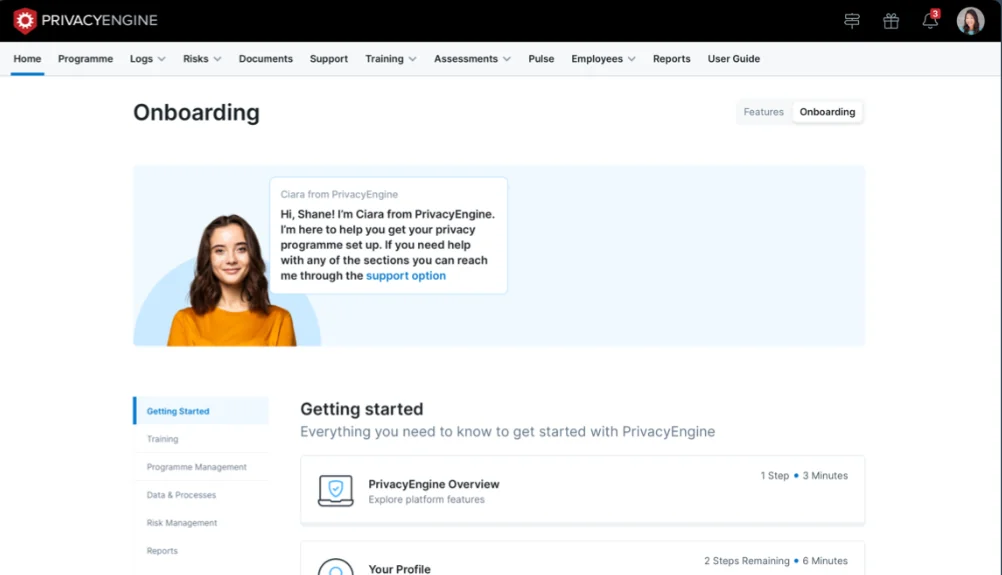Data Subject Access Requests (DSARs) are requests made by individuals to gain access to their personal data that is being processed by an organisation. These requests are an essential part of data protection legislation and ensure that individuals have control over their personal information. Understanding the timeframe for completing a DSAR is crucial for organisations to comply with legal requirements and provide timely responses to individuals seeking access to their data.
Understanding Data Subject Access Requests
A Data Subject Access Request, commonly known as a DSAR, is a formal request made by an individual to an organisation to access their personal data. The purpose of a DSAR is to allow individuals to gain insights into the personal information held by an organisation and understand how it is being processed.
A DSAR is a request made under data protection laws, such as the General Data Protection Regulation (GDPR), for individuals to access their personal information. It can involve requesting copies of personal data, information on the purposes of the processing, and any recipients to whom the data has been disclosed.
Importance of Data Subject Access Requests
Data Subject Access Requests play a vital role in upholding individuals’ rights to privacy and data protection. They empower individuals to take control of their personal information and ensure that organisations are transparent about their data processing activities. By making DSARs, individuals can identify and rectify any inaccuracies in their personal data, verify the lawfulness of processing, and even request the deletion of their information under certain circumstances.
When an individual submits a DSAR, it triggers a series of actions within an organisation to fulfil the request. The organisation must verify the identity of the individual making the request to prevent unauthorised access to personal data. This verification process ensures that only the rightful owner of the data can access it.
Once the identity is verified, the organisation begins the process of gathering the requested personal data. This can involve searching through various databases, systems, and file repositories to compile a comprehensive record of the individual’s personal information. The organisation must ensure that they provide all the relevant information requested by the individual, as failing to do so may result in non-compliance with data protection regulations.
Got a DSAR?
Our team of highly skilled and qualified Data Protection Consultants are ready to get started to guide you through the process.
Book a discovery call ›During the data-gathering process, organisations may come across sensitive or confidential information related to other individuals. In such cases, they must take appropriate measures to redact or anonymise the data to protect the privacy of those individuals. This ensures that the DSAR process respects the rights of all individuals involved.
Once the organisation has compiled the requested personal data, they must provide it to the individual in a clear and understandable format. This can be in the form of physical copies, electronic files, or access to secure online portals. The organisation should also provide an explanation of how the data is being processed, including the purposes, legal basis, and any third parties involved in the processing.
It is important to note that DSARs are not limited to individuals’ current personal data. They also cover historical data that an organisation may hold. This allows individuals to gain insights into how their personal information has been processed over time and identify any potential issues or concerns.
DSARs can also be used as a tool for individuals to exercise their rights under data protection laws. Apart from accessing personal data, individuals can also request the correction or deletion of inaccurate or outdated information. They can object to the processing of their data for certain purposes, such as direct marketing. DSARs provide individuals with a means to assert control over their personal information and ensure that it is being handled in a lawful and fair manner.
Data Subject Access Requests are a crucial mechanism for individuals to exercise their rights to privacy and data protection. They enable individuals to access and understand their personal data, rectify inaccuracies, and ensure that organisations are accountable for their data processing activities. By embracing DSARs, organisations demonstrate their commitment to transparency and respect for individual privacy rights.
Legal Framework Surrounding Data Subject Access Requests
When it comes to handling Data Subject Access Requests (DSARs), organisations are required to adhere to a number of laws and regulations to ensure compliance and efficiency. DSARs enable individuals to obtain information about the processing of their personal data, including the purposes for which it is being processed, the categories of personal data being processed, and the recipients or categories of recipients to whom the personal data has been or will be disclosed.
The legal framework surrounding DSARs is designed to strike a balance between the rights of individuals and the legitimate interests of organisations. By establishing clear guidelines and requirements, these laws and regulations aim to ensure that organisations handle DSARs in a transparent, fair, and secure manner.
General Data Protection Regulation (GDPR) Guidelines
The GDPR, which came into effect in 2018, has established robust guidelines for handling DSARs within the European Union and processing the personal data of EU citizens. The legislation has set out clear and specific requirements for organisations, including the timeframe for responding to DSARs, the provision of requested information, and the need to ensure data security and privacy.
Under the GDPR, organisations are generally required to respond to DSARs within one month of receipt. However, this timeframe can be extended by an additional two months in complex cases, taking into account the complexity and number of requests. Organisations must provide the requested information in a concise, transparent, intelligible, and easily accessible format, using clear and plain language.
The GDPR highlights the significance of data security and privacy when dealing with DSARs. Organisations must take appropriate technical and organisational measures to ensure the security of personal data, including protection against unauthorised or unlawful processing, accidental loss, destruction, or damage.
Other Relevant Laws and Regulations
In addition to the GDPR, other laws and regulations may apply depending on the jurisdiction and sector in which an organisation operates. For example, the California Consumer Privacy Act (CCPA) provides individuals with similar rights and obligations to organisations operating in California. Organisations should be aware of and comply with the relevant legislation to ensure they meet the legal requirements for DSARs.
Sector-specific regulations such as the Health Insurance Portability and Accountability Act (HIPAA) in the healthcare industry or the Payment Card Industry Data Security Standard (PCI DSS) in the payment card industry may impose additional requirements and obligations on organisations when handling DSARs.
It is crucial for organisations to stay up to date with the evolving legal landscape surrounding DSARs. By understanding and complying with the applicable laws and regulations, organisations can ensure that they handle DSARs in a legally compliant and efficient manner, fostering trust and transparency with individuals.
Timeframe for Completing a Data Subject Access Request
The timeframe for completing a Data Subject Access Request (DSAR) plays a crucial role in ensuring individuals’ rights are upheld, and organisations meet their legal obligations. Adhering to the specified timeframe enables organisations to maintain transparency and build trust with individuals.
When it comes to processing DSARs, organisations must be diligent in their efforts to provide timely responses. The General Data Protection Regulation (GDPR) sets out a standard time limit within which organisations are required to respond to DSARs. This time limit is one calendar month from the date of receipt. Within this timeframe, organisations are expected to locate and retrieve the requested data, review and redact any third-party information, and deliver the data to the requester.
Standard Time Limit
Under the GDPR, the standard time limit for completing a DSAR is one month. This timeframe may seem relatively short considering the various tasks involved in processing a request, but it emphasises the importance of efficiency and responsiveness in safeguarding individuals’ rights. By adhering to this time limit, organisations demonstrate their commitment to respecting individuals’ privacy and ensuring the smooth operation of the data subject access process.
Extensions and Exceptions
While the standard timeframe provides a clear guideline for organisations, there are circumstances where extensions may be necessary. For instance, if a DSAR is particularly complex or if an organisation receives numerous requests from the same individual, they may be granted an additional two months to respond. This extension allows organisations to allocate sufficient time and resources to handle the request effectively.
However, it is important to note that if an organisation requires an extension, they must notify the requester within the initial one-month period. This notification should explain the reasons for the extension and inform the requester of their right to lodge a complaint with a supervisory authority if they believe the delay is unjustified. By providing this information, organisations maintain transparency and ensure that individuals are aware of the progress being made on their request.
In addition to extensions, certain exceptions may also apply in specific situations. For example, if complying with a DSAR would involve disclosing confidential information or infringing on the rights of others, organisations may need to seek legal advice and consider withholding specific information. In such cases, it is crucial for organisations to clearly communicate the reasons for not providing certain information to the requester. This transparency helps individuals understand the limitations and complexities involved in processing their requests.
Ultimately, the timeframe for completing a DSAR is designed to balance the rights of individuals with the practical realities faced by organisations. By adhering to the standard time limit, seeking extensions when necessary, and communicating exceptions clearly, organisations can ensure they fulfil their obligations while maintaining trust and transparency with individuals.
Steps Involved in Processing a Data Subject Access Request
Handling a Data Subject Access Request (DSAR) requires several crucial steps to guarantee that organisations appropriately and securely comply with individuals’ requests to access their personal data. Let’s examine each step in detail.
Receiving the Request
When an organisation receives a DSAR, it is essential to have proper channels in place for individuals to submit their requests effectively. This can include designated email addresses, online request forms, or dedicated contact points. Promptly acknowledging receipt and providing the appropriate information on how the request will be processed can enhance transparency and alleviate concerns.
It is important to note that organisations should have clear and accessible information available to individuals on how to submit a DSAR. This can be through privacy notices, website FAQs, or dedicated sections on their websites. By providing clear instructions, organisations can ensure that individuals can exercise their rights easily.
Verifying the Identity of the Requester
Validating the identity of the requester is crucial to prevent any unauthorised access to personal data. Organisations must establish reliable verification processes to ensure that the requester is the data subject or authorised to act on their behalf. This may involve requesting additional information or documentation to authenticate the identity of the requester.
Verifying the identity of the requester is not only important for data protection reasons but also to prevent any potential fraudulent attempts. Organisations should implement robust identity verification procedures to safeguard the personal data of individuals and maintain the integrity of the DSAR process.
Locating and Retrieving the Data
Once the identity of the requester is verified, organisations need to locate and retrieve the requested data. This process involves identifying relevant databases, systems, and physical files where the personal data is stored. Organisations should have appropriate data management systems and processes in place to facilitate efficient data retrieval.
Efficient data retrieval requires organisations to have well-organised data storage and management systems. By implementing proper data categorisation and indexing techniques, organisations can streamline the process of locating and retrieving the requested data, ensuring a timely response to DSARs.
Reviewing and Redacting the Data
Prior to providing the data to the requester, organisations should conduct a thorough review to ensure the information shared does not infringe on the privacy rights of others or contain confidential or commercially sensitive information. Redacting the personal data of third parties from the requested information is essential to protect their privacy.
Reviewing and redacting data can be a meticulous and time-consuming process, especially when dealing with large volumes of information. Organisations should allocate sufficient resources and employ trained personnel to handle this task accurately. By ensuring the proper review and redaction of data, organisations can maintain compliance with data protection regulations and protect the privacy of both data subjects and third parties.
Delivering the Data to the Requester
Once the requested data has been reviewed and redacted, organisations should securely deliver the information to the requester using a method agreed upon during the validation process. This can include encrypted email, secure file transfer, or physical delivery through registered mail. Organisations need to ensure that personal data is appropriately protected during transit and that it reaches the intended recipient securely.
Secure delivery methods are crucial to maintain the confidentiality and integrity of the personal data being shared. Organisations should implement encryption and other security measures to protect the data during transit. Additionally, maintaining a secure audit trail throughout the delivery process can provide evidence of compliance and accountability.
In conclusion, understanding the timeframe for completing a Data Subject Access Request is essential for organisations to comply with legal requirements and maintain transparency with individuals. By adhering to the specified timeframe and following the necessary steps, organisations can ensure that DSARs are effectively processed, and individuals’ rights to access their personal data are upheld.
Learn more with PrivacyEngine. Schedule your demo now!




